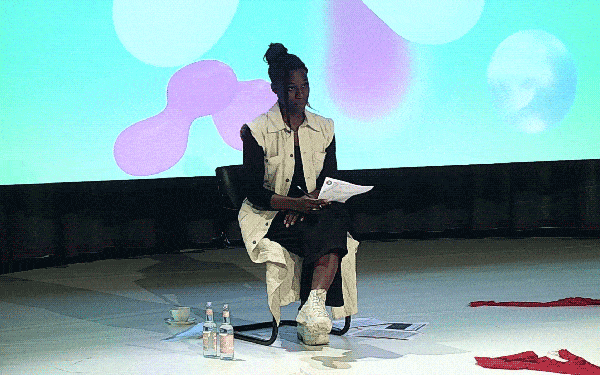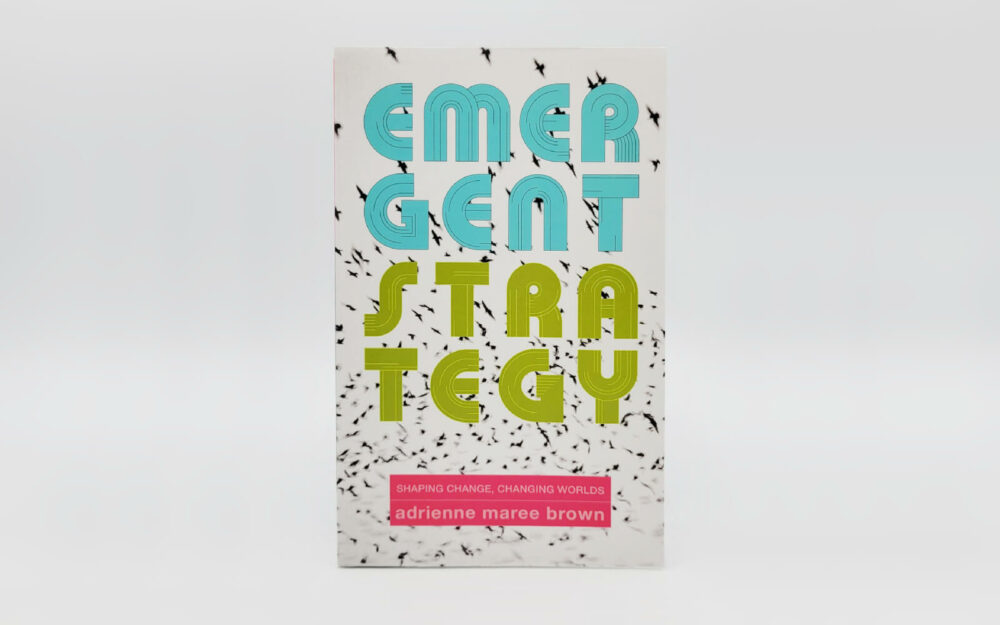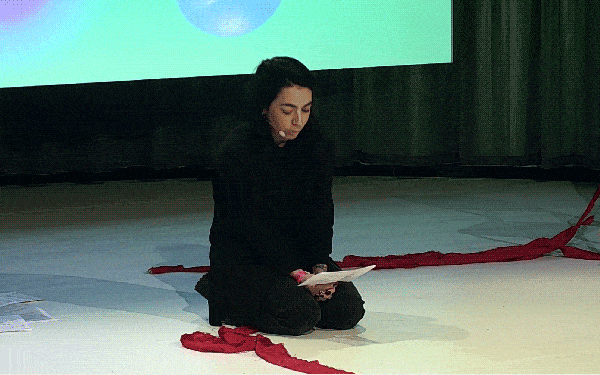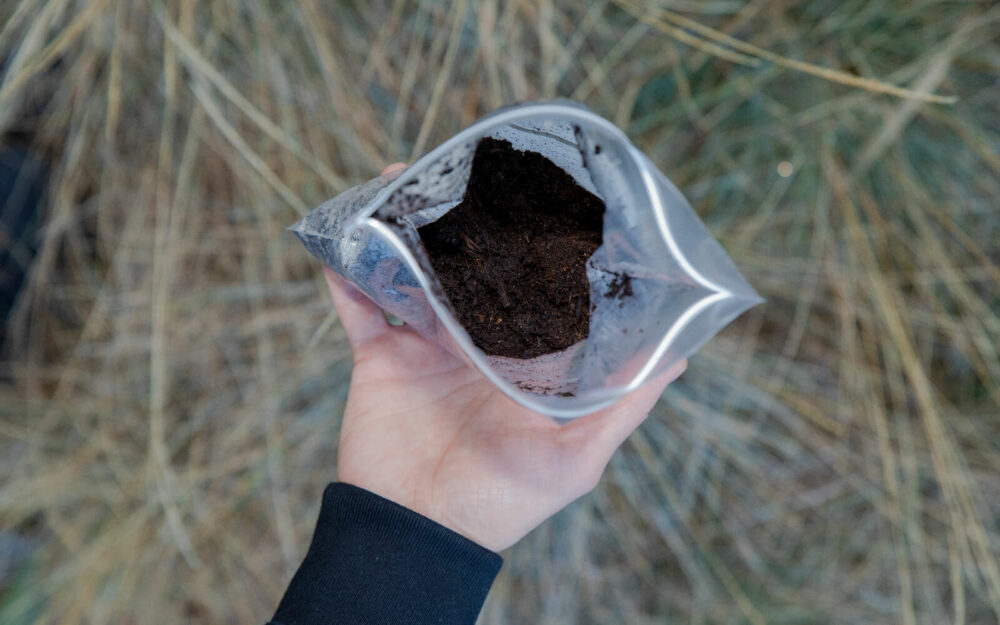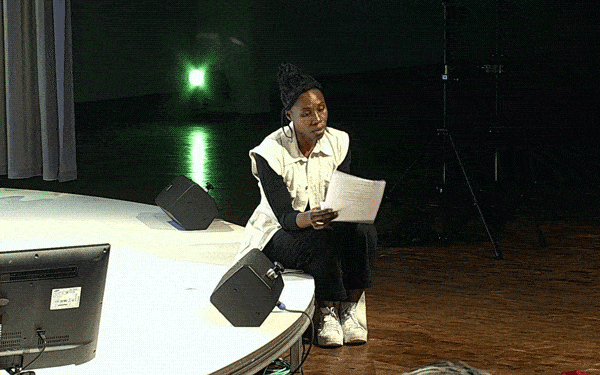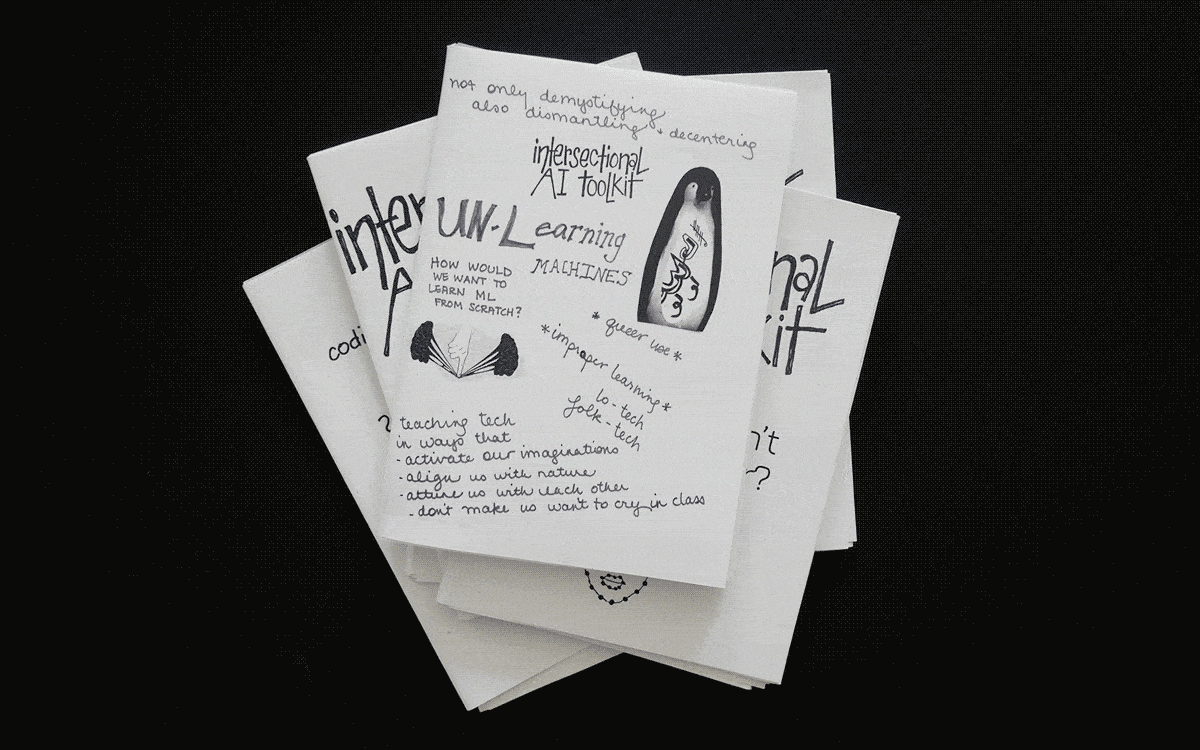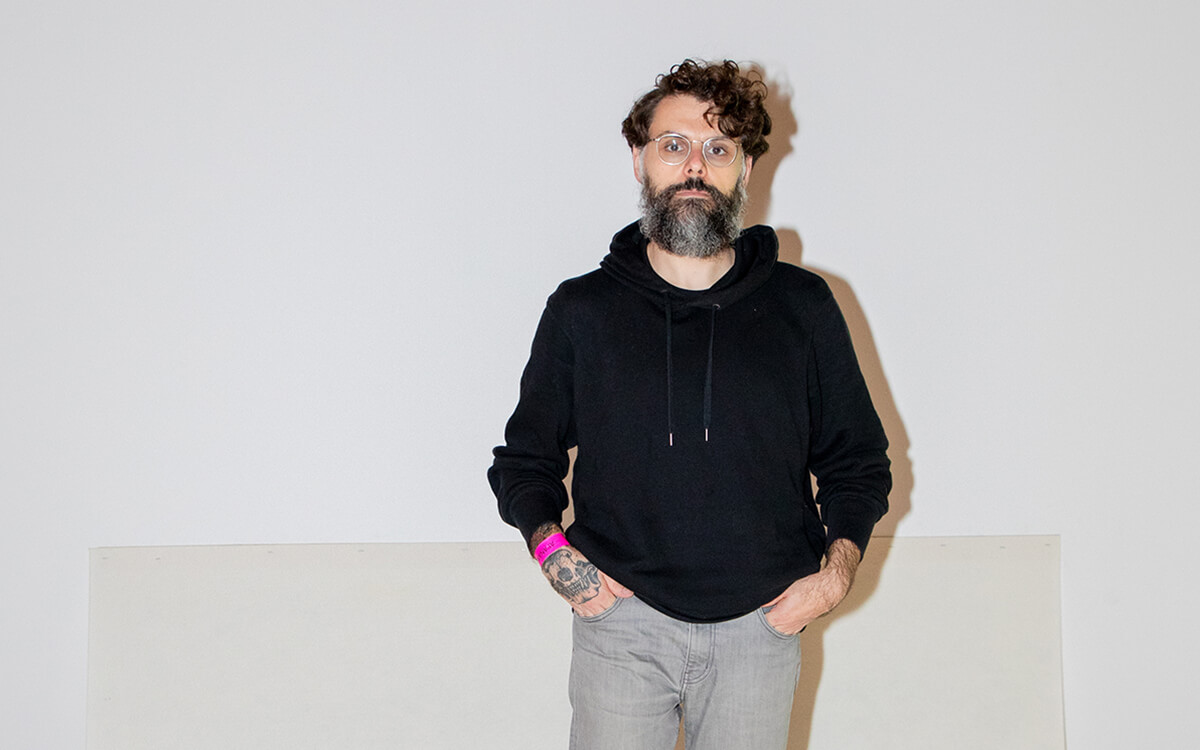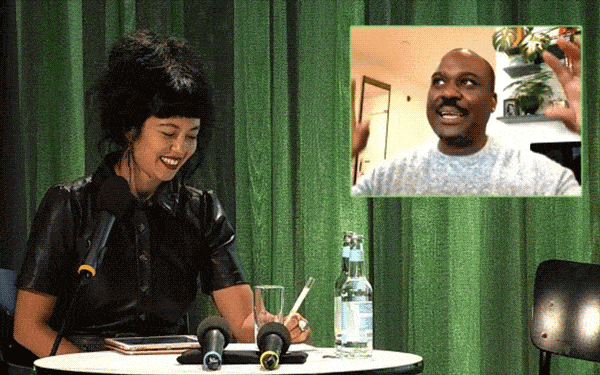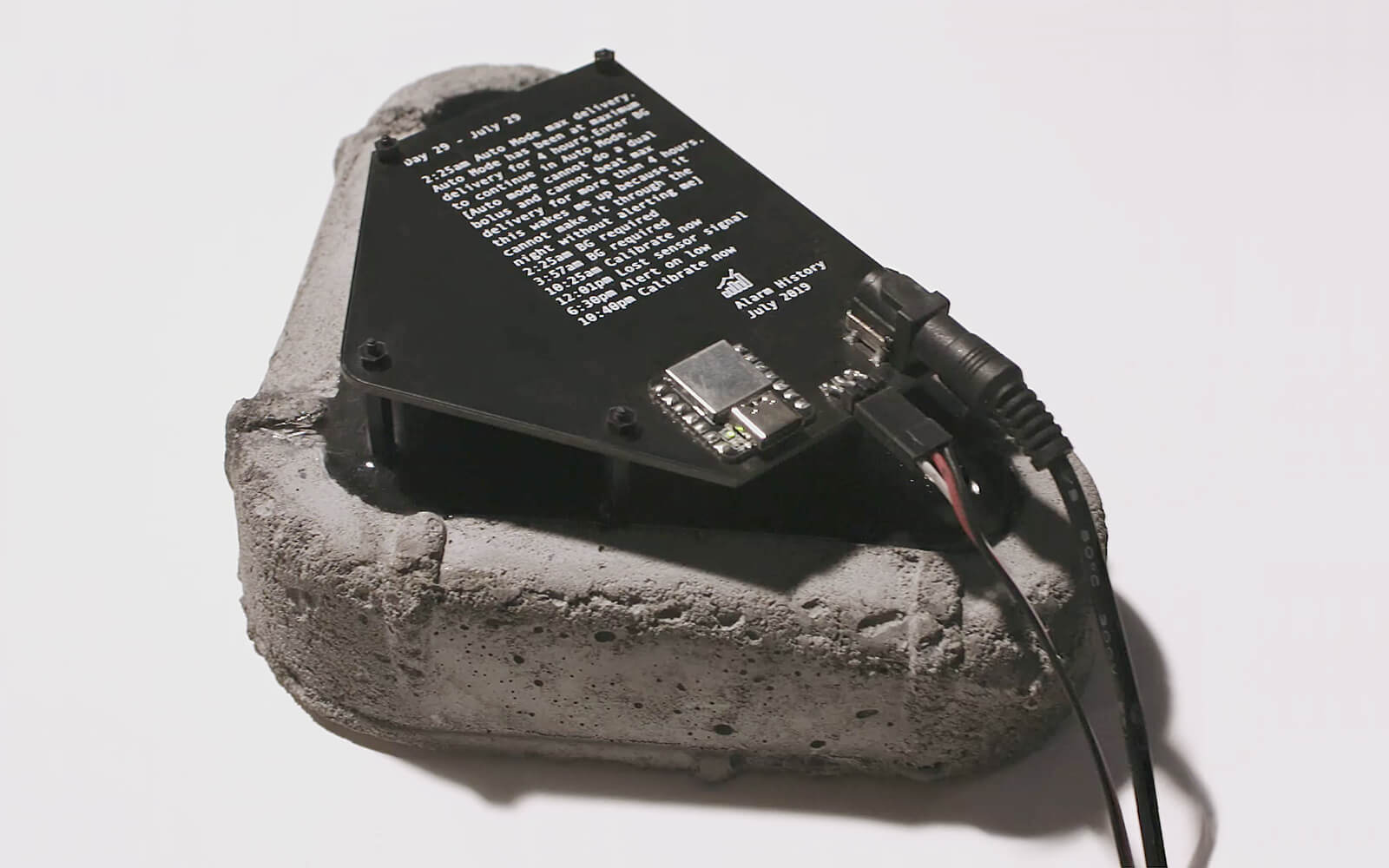AI Anarchies: Wild Imaginings and Alternatives
Provocation
Towards AI Anarchies: Wild Imaginings and Alternatives
Speakers:
Mimi Ọnụọha, Tiara Roxanne
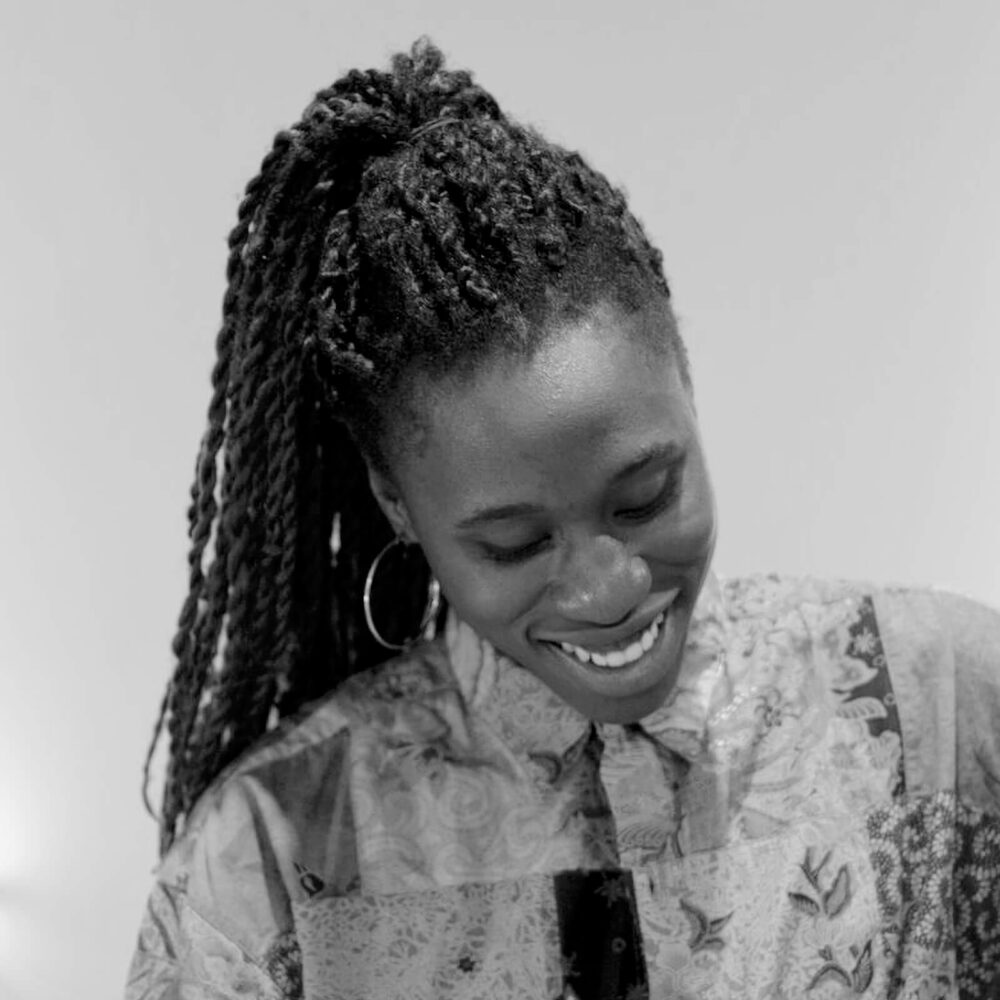
Profile:
Mimi Ọnụọha
Mimi Ọnụọha is a Brooklyn-based Nigerian-American artist creating work about a world made to fit the form of data. By foregrounding absence and removal, her practice makes sense of the power dynamics that result in disenfranchised communities’ different relationships to digital, cultural, historical, and ecological systems. Onuoha has lectured and exhibited internationally, and been in residence at venues including Studio XX, Data & Society, and the Royal College of Art.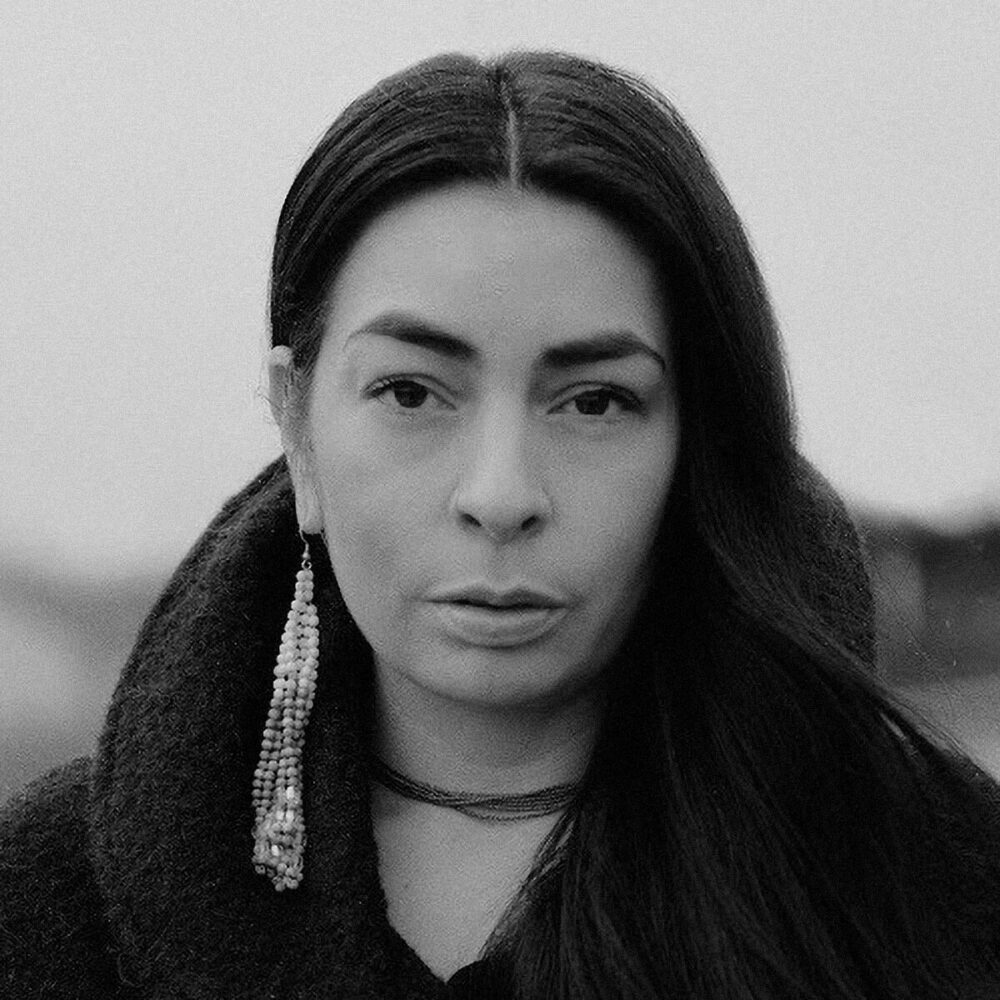
Profile:
Tiara Roxanne
Tiara Roxanne is a Tarascan Indigenous Mestiza scholar and artist based in Berlin. They are a postdoctoral fellow at Data & Society, and their practice investigates the encounter between Indigeneity and AI by interrogating colonial structures embedded in machine learning systems. Tiara has presented work at venues including at the Images Festival, European Media Art Festival, Laboratorio Arte Alameda, and transmediale.
Curatorial Frame:
How do we understand the AI of the future in relation to the AI of the past? How do we grapple with the scale and speed of contemporary AI and imagine a leftist, communal, distributive, or transfeminist AI? Mimi Ọnụọha’s work has investigated the political, computational, and aesthetic implications of being both invisible and hypervisible to datasets. Tiara Roxanne‘s work involves decolonialism, arguing its impossibility. They ultimately ask: What other gestures of healing exist? Together, they invite us all to consider: What does it mean to gather and hold space for each other, to think big and dream wild about technology outside contemporary ambitions and frames?
Soundbite:
“What is imagination and why do we need it?”
“In more mainstream spaces I think it is tempting to dismiss the idea that imagination is powerful. The word comes off as kind of cuddly, nonthreatening, the verbal equivalent of a crayon drawing on a fridge. Maybe that air of triviality stems from a misconception: that the act of imagining only involves idly dreaming ideas that have no connection to reality.”
“In more mainstream spaces I think it is tempting to dismiss the idea that imagination is powerful. The word comes off as kind of cuddly, nonthreatening, the verbal equivalent of a crayon drawing on a fridge. Maybe that air of triviality stems from a misconception: that the act of imagining only involves idly dreaming ideas that have no connection to reality.”
Tiara Roxanne & Mimi Ọnụọha, in performative conversation
Soundbite:
“What is AI? Why do we need it?”
“AI is machine learning. It’s a machine learning tool inscribed with the simulation of human intelligence. AI is mimetic. AI needs us. We are possessed by it. And to be possessed by something is to be controlled.”
“AI is machine learning. It’s a machine learning tool inscribed with the simulation of human intelligence. AI is mimetic. AI needs us. We are possessed by it. And to be possessed by something is to be controlled.”
Mimi Ọnụọha & Tiara Roxanne, in performative conversation
Precedent:
Ọnụọha quotes adrienne maree brown’s claims that we are immersed in “an imagination battle.” Sourced from brown’s 2017 book Emergent Strategy, that claim fits into a larger conversation about maintenance, repair, and restoration, inspired by the science fiction author Octavia Butler. Outlining her thinking and approach in the chapter “Principles of Emergent Strategy,” brown writes “move at the speed of trust. Focus on critical connections more than critical mass—build the resilience by building the relationships.”
Soundbite:
“Can you trust AI? Can you trust imagination?”
“I don’t know that I trust either. But I trust in ecosystems and in what we can develop through interrelationality. My friend and I have created these values for ourselves and for others around technology, around AI, and around togetherness. And in holding them near they help us think about what we would need for an ecosystem. I’m offering up these cards to all or any of you, as a reminder to hold our values near.”
“I don’t know that I trust either. But I trust in ecosystems and in what we can develop through interrelationality. My friend and I have created these values for ourselves and for others around technology, around AI, and around togetherness. And in holding them near they help us think about what we would need for an ecosystem. I’m offering up these cards to all or any of you, as a reminder to hold our values near.”
Tiara Roxanne & Mimi Ọnụọha, in performative conversation
Soundbite:
“Which myths maintain AI today?”
“A myth is a story we tell ourselves in order to feel connected, in order to feel safe. In most cases this is often based on what is untrue. On what is not possible. A myth that is told is that AI is here, to save humanity. As a mode of convenience, as a placeholder for processing. Something that might provoke manipulation, shapeshifting, and transformation into or from our projection, desire, or lack.”
“A myth is a story we tell ourselves in order to feel connected, in order to feel safe. In most cases this is often based on what is untrue. On what is not possible. A myth that is told is that AI is here, to save humanity. As a mode of convenience, as a placeholder for processing. Something that might provoke manipulation, shapeshifting, and transformation into or from our projection, desire, or lack.”
Mimi Ọnụọha & Tiara Roxanne, in performative conversation
Project:
Midway through the performance, Ọnụọha shares a project that vividly captures the relationship between kin and soil spoken of in her and Roxanne’s offerings. A Creative Capital Project, in Ground Truth (2022) Ọnụọha responds to the discovery of the remains of 95 Black people who were victims of the nineteenth century practice of convict leasing. “I’m curious about why the remains of the Sugarland 95 were able to cut through that veil of unknowability when others did not,” says Ọnụọha in a video synopsis of the project, which uses machine learning to determine what other U.S. counties may contain similar mass graves.
Soundbite:
“Do you ever have a need to be categorized? Or classified, or recorded?”
“Often. In data colonialism forms of technological hauntings are experienced, when Indigenous peoples are marked as others and remain unseen and unacknowledged. Without acknowledgement, without classification there is no evidence of existence. Without record I am extinct. I want to be acknowledged, but I don’t want to be seen.”
“Often. In data colonialism forms of technological hauntings are experienced, when Indigenous peoples are marked as others and remain unseen and unacknowledged. Without acknowledgement, without classification there is no evidence of existence. Without record I am extinct. I want to be acknowledged, but I don’t want to be seen.”
Mimi Ọnụọha & Tiara Roxanne, in performative conversation
Process:
Part performative conversation, part ritual, Roxanne sporadically moves away from the stage and weaves through the room engaging Autumn School participants. She walks the length of the front row, offering bags of soil to outstretched hands. “I am carrying the soil, I am moving territory, I am holding ancestry as I walk across the room,” Roxanne says solemnly. “I am leaving this earth, I am leaving this soil with you. I am leaving this soil with you. I place this soil in your hands as a marker of fertility. As an imagination. As a point of departure. I am holding the bloodline of those before me, as a practice of ceremony. I move my body and I carry you all with me.”
Photography: Silke Briel
Photography: Silke Briel
Soundbite:
“What have you learned from your past beliefs or work, theories or actions? What were you wrong about?”
“I’m not sure what I have learned in a way that I can describe such a thing articulately. But something I return to time and time again is the body. Is my body. Because my body holds the memory, the blood, the lineage, the story, and the safety. The body is a cosmology of truth, perspective, wisdom. I often get too caught up in impossibility, the impossibility of the material border, the digital, the digital border, the constraints of the body, and the constraints of the machine.”
“I’m not sure what I have learned in a way that I can describe such a thing articulately. But something I return to time and time again is the body. Is my body. Because my body holds the memory, the blood, the lineage, the story, and the safety. The body is a cosmology of truth, perspective, wisdom. I often get too caught up in impossibility, the impossibility of the material border, the digital, the digital border, the constraints of the body, and the constraints of the machine.”
Mimi Ọnụọha & Tiara Roxanne, in performative conversation
Soundbite:
“Tiara, what needs to be protected?”
“Land. Cosmology. The sacred. Trust. Bodies. Memories. The stories our elders pass on to us. Language. Food. Intimate exchanges. But, how do we protect when the gaze is centred on the surface? The surface of the machine.”
“Land. Cosmology. The sacred. Trust. Bodies. Memories. The stories our elders pass on to us. Language. Food. Intimate exchanges. But, how do we protect when the gaze is centred on the surface? The surface of the machine.”
Mimi Ọnụọha & Tiara Roxanne, in performative conversation
Alexander Scholz
Alex is a Berlin-based writer, artistic director, and cultural worker. As the founder and creative director of HOLO, he helps produce and disseminate knowledge on disciplinary interstices, artistic research, and cultural transformations in the digital age. Over the years, he curated exhibitions, conferences, and educational programmes for organizations and festivals including A.C.C. (KR), Mapping (CH), MUTEK (CA), and NODE Forum for Digital Arts (DE).
Greg J. Smith
A writer and cultural worker based in Hamilton, Canada, Greg is an editor for HOLO and his writing has appeared in publications including Creative Applications Network, Musicworks, and Back Office. He is also a PhD candidate within the Department of Communication Studies and Multimedia at McMaster University, where he is researching the emergence of the programmable drum machine in the early 1980s.
